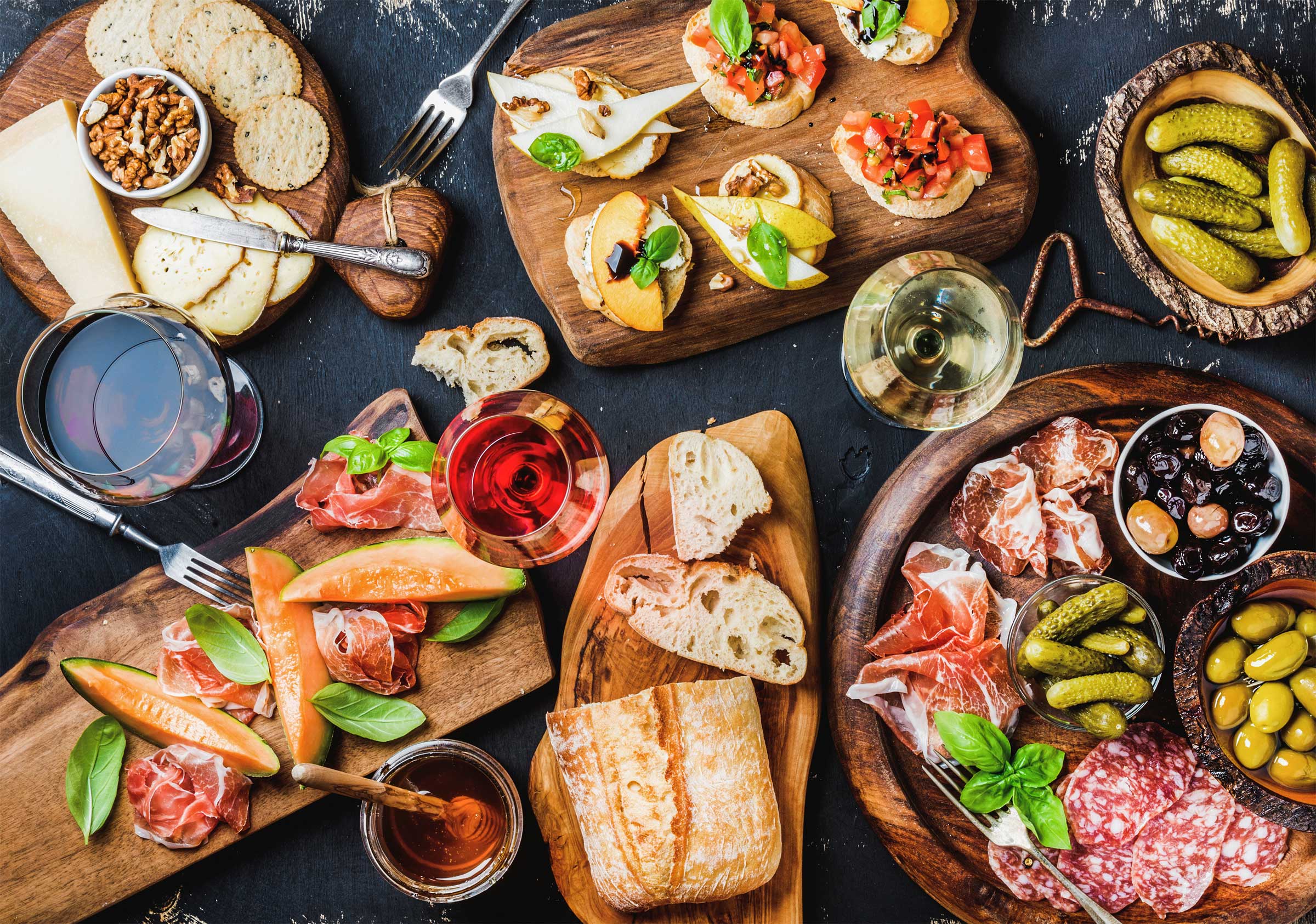Ciao e benvenuto a tutti! I hope you are ready to give the boot to boredom, because today kicks off the start of my Italian passion blog. Over the next few uploads, we will learn about some interesting quirks of Italian culture, society, food, and much more! Today, we will get a little flavor by discussing food. Now, I am sure many of you have eaten at Olive Garden, Carrabba’s, and your small-town pizza joint before, but we are going to put that experience on the chopping block! Why? I will tell you this: Olive Garden is to Italian cuisine as Rutgers is to skillful football. But before we dive into a pool of Italian dishes, let’s talk meal structure.

You may be thinking, “Well, this can’t be too complicated, between breakfast, lunch, and dinner.” Wrong. The proper Italian meal is by no means simple, and I too thought the same way until only a few years ago. To start, I will list the basic phases, respectively: l’aperitivo, l’antipasto, il primo, il secondo, il contorno, il dolce, caffè, e digestivo. If I thoroughly dissected all of these, I would be biting off more than I could chew in a blog post. Let’s instead boil this down: l’aperitivo and il digestivo involve consuming liquors, l’antipasto is the appetizer round, il primo, secondo, and contorno are the main courses (go figure), and caffè and dolce are dessert. Some of you may be confused as to why Italians consume alcohol before and after meals. In essence, it is traditionally believed that the alcohol prepares the stomach to digest, but speaking from experience, l’aperitivo and il digestivo are not as widespread as the rest of the steps. Consider this like another form of “pre-gaming,” if that is your thing.
Hopefully you will find l’antipasto more appetizing. This part of the Italian meal more closely mirrors an American appetizer, as you consume charcuterie elements, bread, and vegetables. On the other hand, the main course is a whole different animal (or rather three). First, Il primo usually consists of a pasta, stew, or rice dish. Shortly–too shortly–after, il secondo is dished out and normally contains a meat or fish, along with il contorno, a salad or vegetable side. As an American, managing the three courses is a task that can be like building a billion dollars in wealth. For comparison, imagine entering a high-quality version of the commons’ dining halls and filling three plates and a bowl on your tray. At this point in the meal, you probably endure intense nausea and bloating, but you must not forget the most important part: dessert! On most occasions, il caffè and il dolce are merged into a grand finale. And despite your fullness, you persevere to finish a miniscule ten cookies and two cups of potent espresso.

If you were to ask me how Italians could eat so much twice a day (breakfast is not a huge meal), I could not tell you. The fact of the matter is this: In Italy, you do not consume the food; rather, the food consumes you. If you would like to learn more about specific dishes, stay tuned for the next blog post. Ci sentiamo presto!
Resource:
“The Classic Italian Meal Structure.” Learn Italian Online Free, http://www.speakitalian.org/the-classic-italian-meal-structure.html.
L’antipasto is something that I have heard about a lot in local italian restaurants. Something curious that I have found is that sometimes l’antipasto only utilizes cold dishes, like cold cuts and the like. Other times, I have seen l’antipasto include different warm dishes and kinds of chicken, warm pasta, and even flatbreads sometimes. Which would you say is more accurate to italian tradition?
That is a great question! I would say that the cold dishes tend to be more widely served, but there are certainly cooked plates as a part of an antipasto. For example, my aunt in Italy would fry zucchini flowers often as an appetizer before we had our main courses. For stuff like chicken and pasta, that tends to be in the meal itself, but there are surely other warm antipasto options.